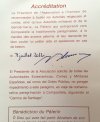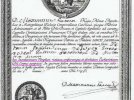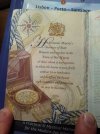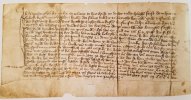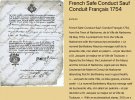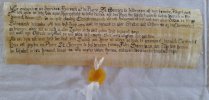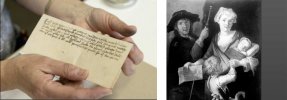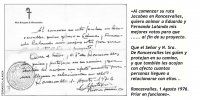I am curious now. I found a few photos of medieval credentials for pilgrims but without translation and in a script that I cannot decipher. I did find a translation of such a credential issued in 1509 on behalf of Joanna of Castile and other territories. Interestingly, it is for two monks from South America ("India") who went on pilgrimage to Santiago. Below is the text translated into English. As mentioned, I don't think that such text is even contained in our modern credentials. They really don't have that much in common with the medieval ones.
I, Doña Juana [long list of her titles] to all the councillors, mayors, governors, municipal officials, knights, squires, officers and men of quality of all the cities, towns and boroughs of my kingdoms and lordships and to each and every one of you to whom this letter is shown, greetings and thanks.
Know that Brother Micael and Brother Juan, natives of India, have come on pilgrimage to visit Monsignor Santiago de Galicia, with the consent of their superior, and wish to return home. I therefore ask you, if they should happen to pass through your cities, towns and villages, to treat them well and with love, and that you grant them the right to ask for alms on their way, from the good people, and that you neither accept nor tolerate any harm to them, for I hereby take them under my defence and receive them into my custody and safety and under my royal protection. The said assurance I grant them for seven months. These shall run and be counted from the date of this letter .... Given in the noble city of Valladolid, on the 30th day of October 1509. ...
Present: Sub-Lieutenant Doctor Caravajal, Doctor Palacio Ramires, Licenciado Polanco, Licenciado Aguirre, Licenciado de Sosa and myself, Luys del Castillo.





